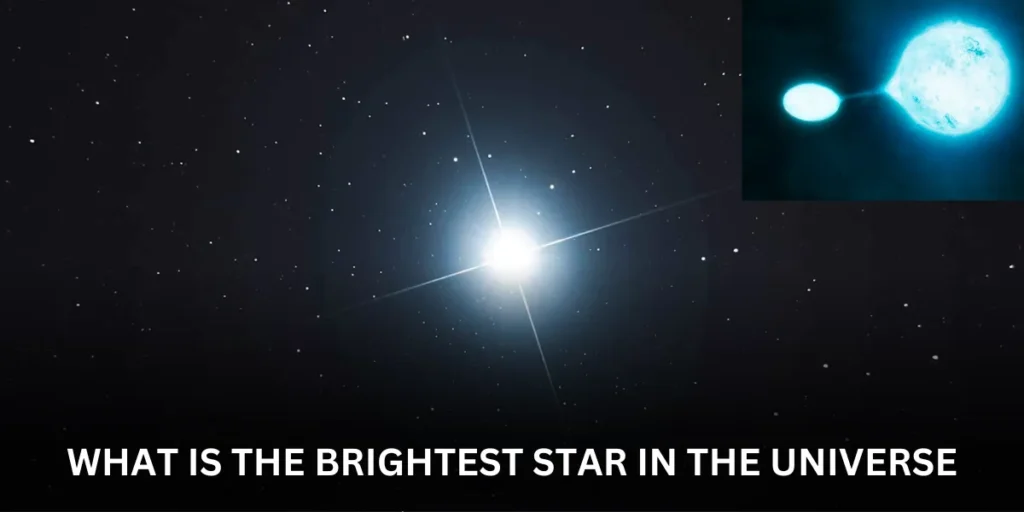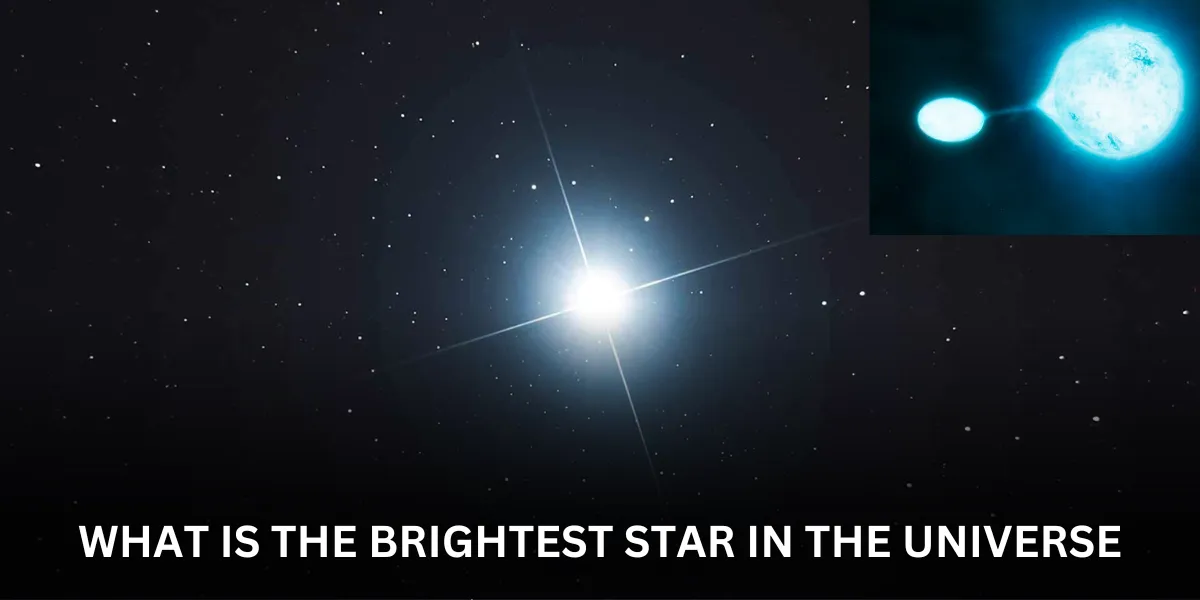
Dazzling the Cosmos: Unveiling the Universe’s Brightest Star
what is the brightest star in the universe Stars have captivated humanity for millennia. Their twinkling light has sparked countless stories, myths, and scientific inquiries. But with billions of stars scattered across the vast universe, which one reigns supreme in brightness? The answer, incredibly, depends on how we define “bright.”
Seeing the Light: Apparent vs. Absolute Magnitude
When we gaze at the night sky, some stars seem to shine much brighter than others. This perceived brightness is called apparent magnitude. The lower the number, the brighter the star appears. For example, Sirius, the famous “Dog Star,” boasts an apparent magnitude of -1.46, making it the brightest star visible from Earth. However, apparent magnitude is deceiving. It considers not only a star’s true brilliance but also its distance from us. A truly humongous star far away might appear dimmer than a closer, smaller star.
To account for distance, astronomers use absolute magnitude. This is a hypothetical measure of a star’s brightness if it were placed at a standard distance of 10 parsecs (a unit of astronomical distance) from Earth. Here, the true luminosity of the star, regardless of its location, shines through.
Candidates for the Brightest Star
So, which star holds the title of the absolute brightest? There are a few contenders, each with its own fascinating story.
-
Eta Carinae: This behemoth resides in the Carina Nebula, a stellar nursery roughly 7,500 light-years away. Eta Carinae is a hypergiant, a class of stars millions of times more massive than our sun. In the 1840s, it underwent a dramatic eruption, briefly becoming the second-brightest object in the night sky (after the Moon). Astronomers estimate its current absolute magnitude to be around -9.5, making it a strong contender for the brightest star. However, Eta Carinae is shrouded in dust and gas, making it difficult to measure its true brilliance precisely.
-
LBV 1806-20: This enigmatic star dwells in the Large Magellanic Cloud, a satellite galaxy of our Milky Way, a staggering 160,000 light-years distant. Like Eta Carinae, LBV 1806-20 is a hypergiant with an estimated absolute magnitude around -14. However, similar to Eta Carinae, this star is surrounded by dust and gas, making it challenging to determine its exact brightness.
-
R136a1: Nestled within the Tarantula Nebula, another stellar nursery, R136a1 is a monster star. Clocking in at around 315 times the mass of our sun, it’s one of the most massive stars ever discovered. While its absolute magnitude is estimated to be around -8.0, R136a1 burns incredibly hot and bright. However, its immense luminosity is spread out over a vast surface area, affecting its overall ranking.
The Intricacies of Brightness
These are just a few of the contenders, and the race for the brightest star is ongoing. Astronomers continue to discover new stellar giants, and our understanding of how stars radiate light is constantly evolving. Here are some additional factors that complicate the quest:
- Variable Stars: Some stars, like Eta Carinae, undergo dramatic fluctuations in brightness, making it difficult to pinpoint a single absolute magnitude.
- Binary Systems: Many stars exist in pairs or even larger groupings. Determining the combined luminosity of such systems adds another layer of complexity.
Beyond the Brightest: A Universe of Stellar Wonders
The hunt for the brightest star is a testament to our insatiable curiosity about the universe. But it’s important to remember that brilliance comes in many forms. Stars like our sun, though not record-breakers, nurture planetary systems and hold the potential for life. Furthermore, even the faintest stars hold secrets about the formation and evolution of our cosmos.
what is the brightest star in the universe So, while the quest for the ultimate champion continues, the true wonder lies in the dazzling diversity of stars that illuminate the universe, each with its own story to tell.
what is the brightest star in the universe
